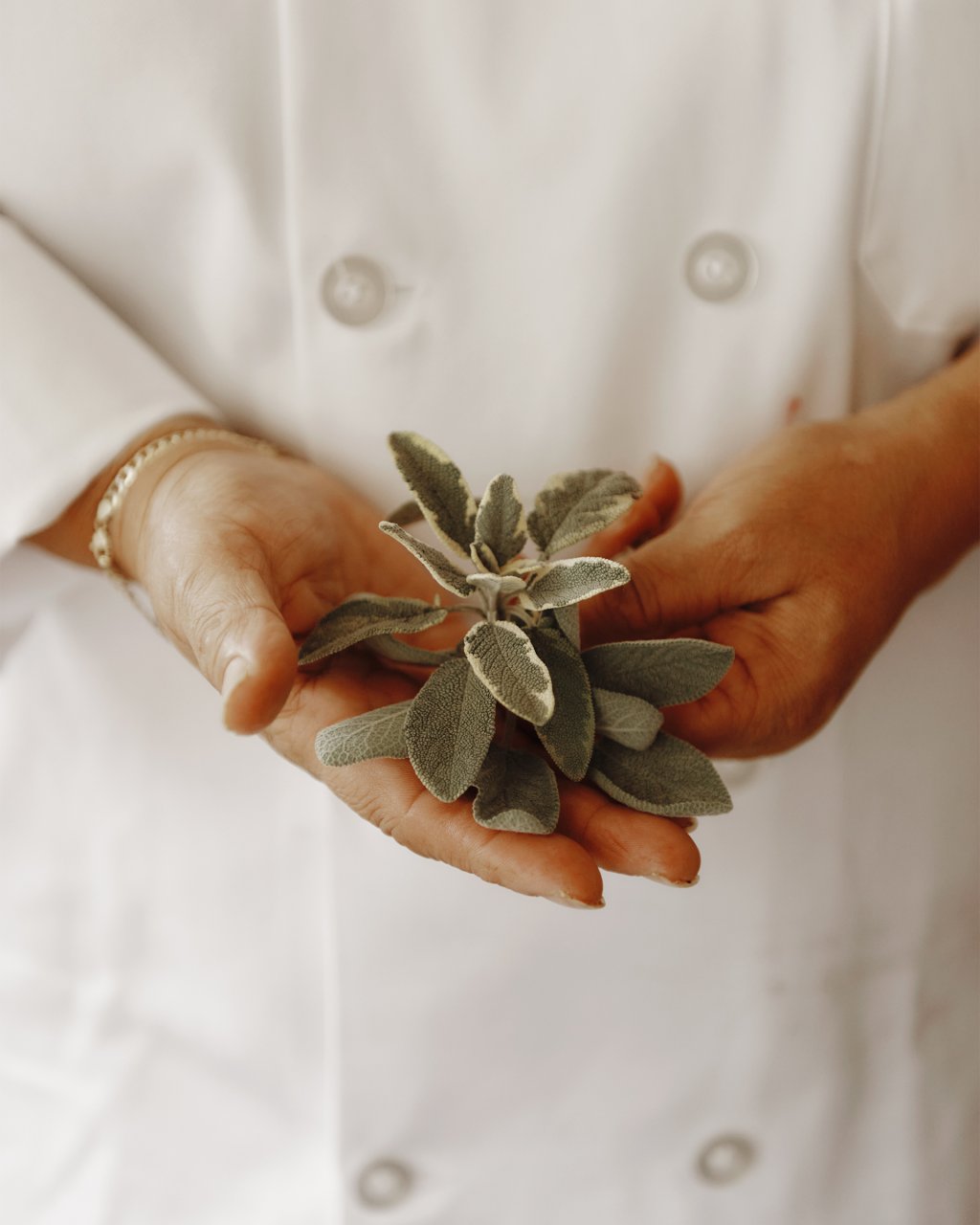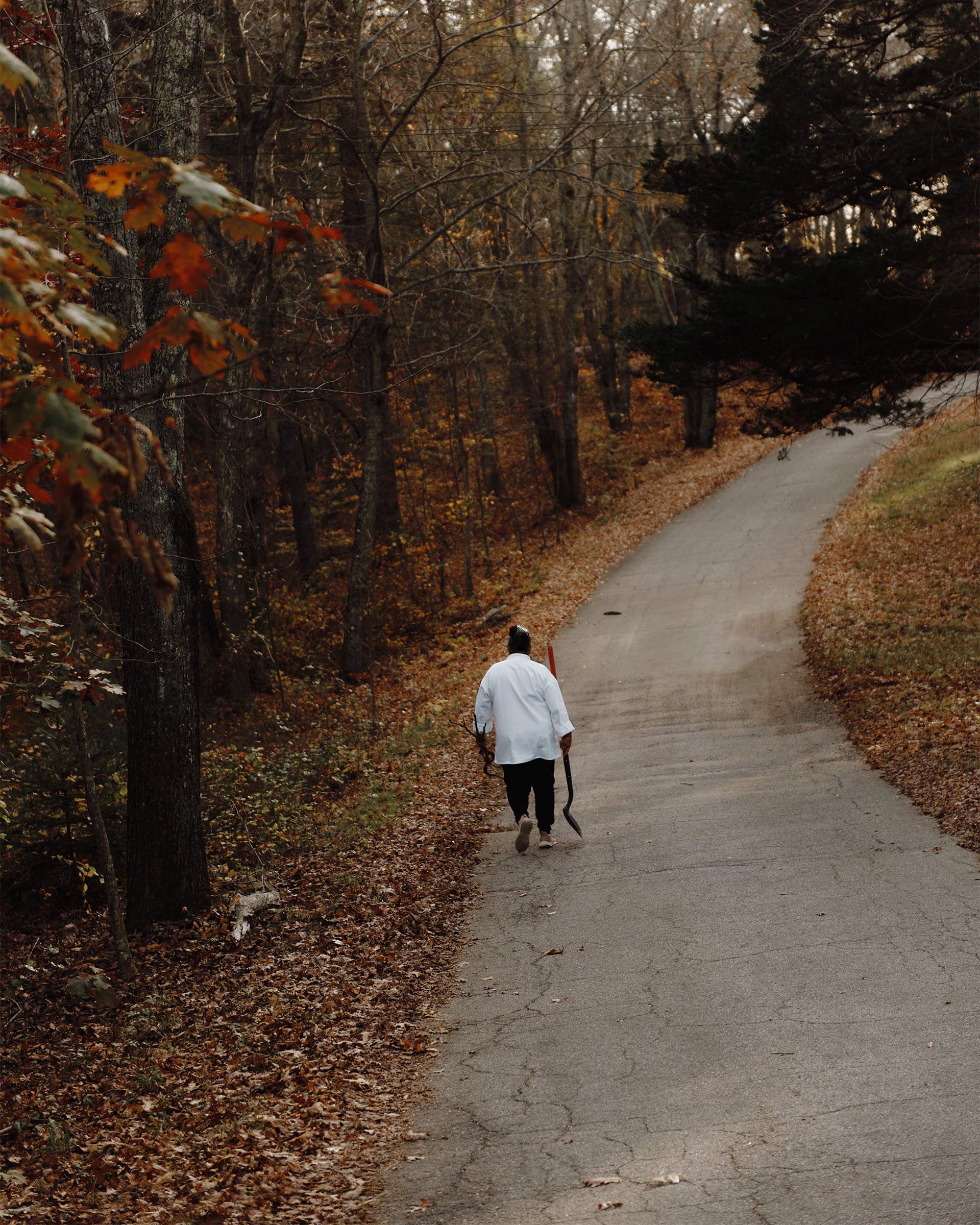When I first call Sherry Pocknett, she’s on her way out the door—headed to forage for mushrooms. But the Mashpee Wampanoag chef and longtime caterer invites me up to her restaurant, Sly Fox Den Too, in Charlestown, R.I., which specializes in East Coast Indigenous cuisine. There, in a little red house right by Narragansett Indian tribal lands, she cooks lunch—crisping duck skin like a potato chip—and explains that the sunflower oil she’s using to prepare our meal can also be rubbed on your hair and skin to keep you looking youthful.
Pocknett, 62, is a member of the tribe best known for feeding the Pilgrims. Her restaurant—named for her fisherman father and Native American rights advocate Chief Sly Fox—is her own way of using her people’s knowledge to feed Americans today. And she hopes the menu shows the breadth and depth of Indigenous foods, which are so much more than Thanksgiving turkey. In fact, at Sly Fox Den Too, which opened in June 2021, the only turkey parts are feathers sticking out of a handwoven basket hanging on the wall. Pocknett explains that her people do eat turkey, but they also respect the birds for their smarts, and wear the feathers in their hair in order to absorb the turkeys’ intelligence.
Read more: What Thanksgiving Means Today to the Native American Tribe That Fed the Pilgrims
Her menu is based on a simple concept: “the food I grew up with,” she says. She cooks what’s local and what’s in season. This time of year, that means foods like rabbit and quahogs, hard-shell clams native to the Atlantic coast. A photographer and I watch Pocknett prepare duck hash and venison—from a deer freshly killed by her son-in-law, which she skinned herself—topped with onion rings. The battered onion rings, she admits, aren’t exactly a deep-rooted tradition: they’re “from a mix,” she says, “but I just love them.” She also makes “journey cakes,” cornmeal patties with dried cranberries, versions of which have a long history as road-trip food.


As she stews a reduction of beach plums harvested by her niece on Martha’s Vineyard, to pair with the venison, Pocknett explains that many people don’t realize this tart native fruit is both edible and delicious, so they go unpicked, left to the birds. To wash it all down, there are pinch pots full of iced tea made from boiled sassafras roots, which were plucked right behind the restaurant. Even if you’ve never heard of this common North American tree, you probably know the flavor—it was long the key ingredient in root beer. The feast is riffing on foods that appeared at the meal known as the First Thanksgiving in 1621. According to historian David Silverman’s This Land Is Their Land, waterfowl, venison, cornmeal, and seafood would have featured prominently at the colonists’ table.
Restaurants specializing in Native American cuisine are rare—but a devoted core of Indigenous chefs are working to raise their profile. Owamni, an upscale eatery in Minneapolis focused on Indigenous cuisine and ingredients, won the James Beard Award for Best New Restaurant this year. Owner Sean Sherman, an Oglala Lakota chef, says Native American restaurateurs face the same challenges that other people of color face in the industry. “We’ve lost a lot of our own resources, especially when it comes to land-ownership,” Sherman says, “and a lot of us coming out of the reservations are coming from poor communities.”

Despite the fraught history, many Wampanoag tribe members still enjoy gathering with their families on Thanksgiving Day—it’s a day off, after all. CheeNulKa Pocknett, Sherry’s nephew, who helps run an oyster and quahog farm in the Cape Cod area, plans to serve his family wild salmon that he caught in Washington State with nets he made himself. At his Thanksgiving table, there’s always an extra plate with a little serving of everything for “the ancestors and spirits.” Danielle Greendeer, who runs a store that sells traditional art and jewelry in the heart of Mashpee tribal land, harvested corn for the meal she’s hosting at her home. She sees the occasion as a natural way to mark the First Thanksgiving, turning the holiday into a celebration of “survival.” After all, she says, “the only way we can survive is by eating.”
While customers at Pocknett’s restaurant wait for their food to come out, they can page through a book called If You Lived During the Plimoth Thanksgiving—which retells the American myth from the perspective of the Wampanoag people. And yet, year-round, many customers still just want her to tell them about Thanksgiving. So she tells them the story she heard growing up. “We are a loving, giving people. We helped them, and then look what happened,” emphasizing the statement with outstretched arms. “They took everything from us and killed us. We got wiped out. But not all the way. We’re still here. We’ve been here for over 12,000 years. We ain’t going nowhere.”
More Must-Reads From TIME
- The 100 Most Influential People of 2024
- The Revolution of Yulia Navalnaya
- 6 Compliments That Land Every Time
- Stop Looking for Your Forever Home
- If You're Dating Right Now , You're Brave: Column
- The AI That Could Heal a Divided Internet
- Fallout Is a Brilliant Model for the Future of Video Game Adaptations
- Want Weekly Recs on What to Watch, Read, and More? Sign Up for Worth Your Time
Write to Olivia B. Waxman/Charlestown, R.I. at olivia.waxman@time.com
